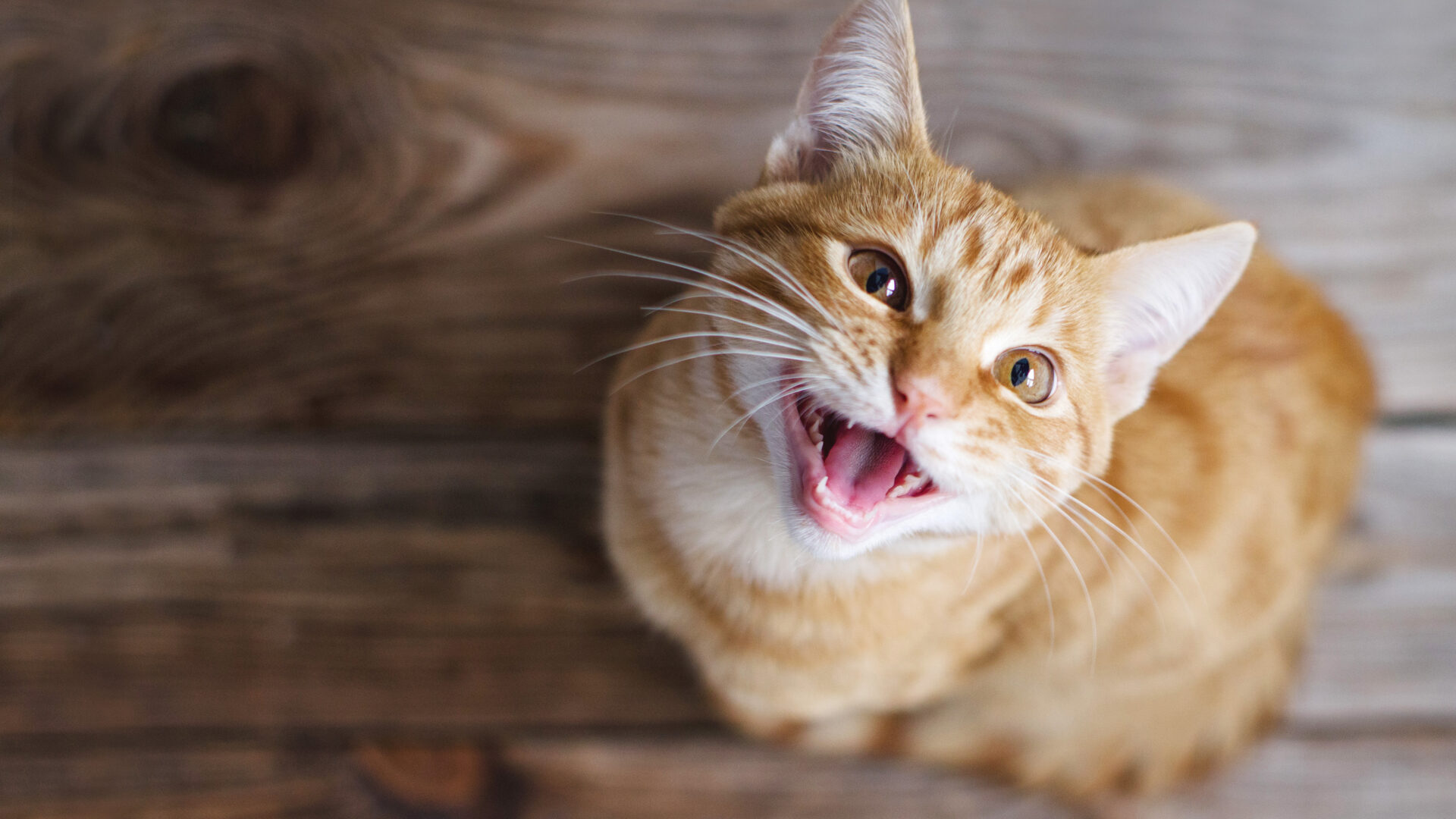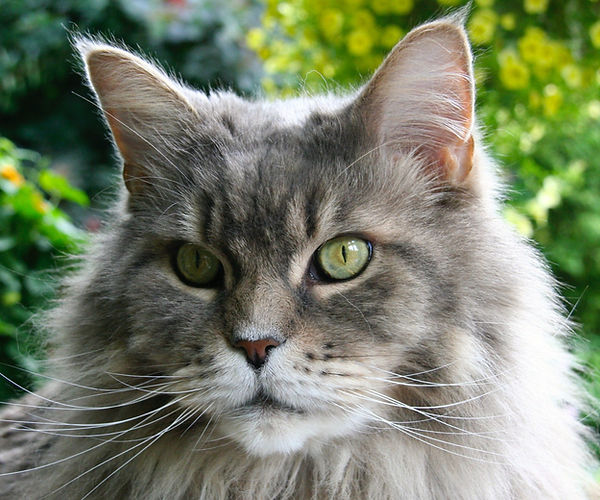
Just like humans, cats can suffer fungal infections! Fungi are parasitic spore-producing organisms that feed on organic matter. While there are roughly 144,000 known species of fungi that exist, cats are susceptible to only select fungal infections. Fungal infections can be passed on to cats through ingestion, inhalation, and absorption through skin, with environmental exposure to soil with pathogenic fungus being the primary mode of transmission for cats.
And so without further ado, here are three common fungal infections to be on the lookout for in your furry best friend. This list is not comprehensive of all fungal infections cats may have.
1. Cryptococcosis
Feline cryptococcosis impacts the respiratory tract, central nervous system, eyes, and skin, and is caused by Cryptococcus neoformans and Cryptococcus gattii [1].
This fungal infection most often presents with upper respiratory symptoms after infection of the nasal cavity and is transmitted through contact through open wounds or inhalation [1].
Symptoms are dependent on the location of the infection and vary greatly. Some signs your cat may have cryptococcosis include:
- Sneezing
- Chronic nasal discharge with clear fluid, blood, mucus, and/or pus
- Polyp masses in nostril
- Nasal swelling
- Blindness
- Paralysis
- Seizures
- Changes in temperament
- Depression
- Skin lesions
- Unresponsive pupils
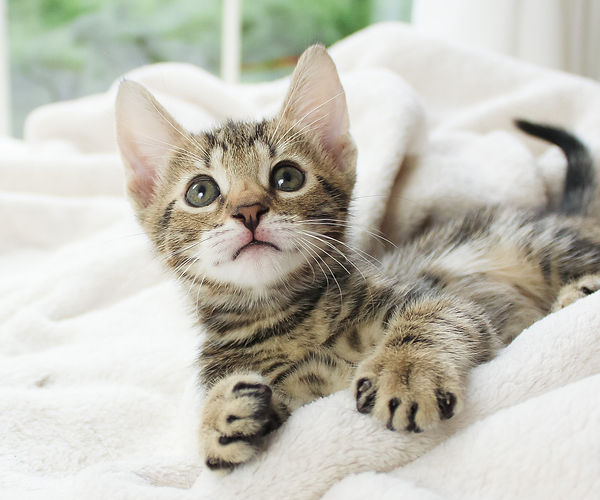
2. Aspergillosis
Several Aspergillus spp. cause feline aspergillosis, which is “a sporadic mycosis” that often leads to chronic infections that usually impact the upper respiratory tract [2]. As with most infections, a weakened immune system leaves cats particularly susceptible to this fungus, and in severe cases can spread to the nervous system or lower respiratory tract. While aspergillosis is rarer in cats than in dogs, this mycotic disease is an emerging infection that is becoming increasingly difficult to treat [2]. Aspergillosis presents in two forms in cats: 1) the sinonasal form (characterized by chronic nasal infections) and 2) the sino-orbital form (characterized by orbital and surrounding tissue invasion) [2]. The latter is extremely invasive and emerging, and is now reported in approximately half of aspergillosis cases [2].
3. Sporotrichosis
The causative agent of sporotrichosis is Sporothrix schenckii. This species of fungus infects cats through contact with an open wound [1]. Sporotrichosis is a chronic, zoonotic disease, meaning that the transmission of an infection from a cat to a human can occur [3]. Cats can go on to infect others through the shedding of the fungus through the open wound and feces [3]. Cats suffering from sporotrichosis often have lesions on their faces and around their noses [1]. Long-term infection is common and associated with depression and listlessness [1]. Although the infection can spread to other parts of the body, this is less common.
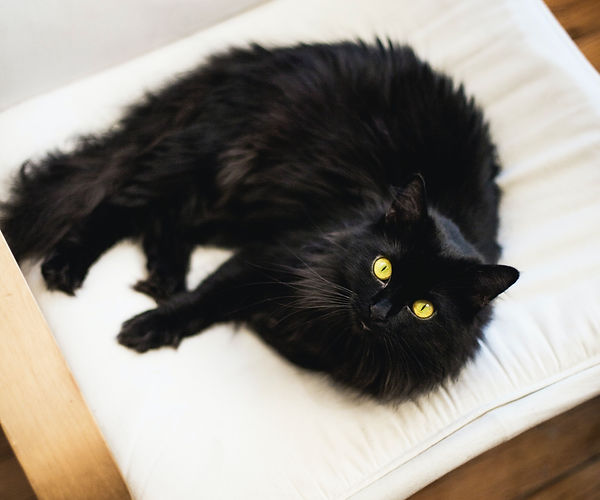
Feline Fungal Infection Treatment and Diagnostics
Veterinarians recommend that cats visit yearly to ensure the well-being of these difficult-to-diagnose mammals. The aforementioned infections in this article may require medical intervention, with treatment ranging from antifungal courses to surgery [1]. Treatment for fungal infections in cats is particularly complex, largely because fungi are difficult to completely eradicate and often advance into chronic infections. Moreover, certain types of fungal species, such as Aspergillus fumigatus, are able to develop antifungal resistance, which occurs when the fungi are no longer responsive to antifungal drugs [4]. For example, a recent study assessing the complete clinical response to combined antifungal therapy in two cats with invasive fungal rhinosinusitis caused by cryptic Aspergillus species in section Fumigati noted that while “itraconazole is the most common antifungal drug used in veterinary companion animal practice” it is “generally unsuitable for the treatment of feline sino-orbital aspergillosis because of intrinsic resistance”, particularly in various Aspergillus spp. [5].
Metagenomics sequencing is increasingly allowing researchers to uncover the diversity of the cat microbiome, which could have significant implications for treatment approaches for fungal infections. One recent study has successfully unveiled the cutaneous mycobiota of healthy and allergic cats using Next-Gen Sequencing (NGS) [6]. This indicates the clinical applicability of using genomic sequencing to identify, analyze, and eventually treat cats more effectively. Personalized treatment entails understanding the exact pathogen that is impacting your cat, with modern technological advances allowing for more targeted clinical diagnostic interventions.
MiDOG Technology in Action
The MiDOG All-in-One Microbial Test may provide the answer to the diagnostic conundrum that feline fungal infections pose. Utilizing NGS technology to detect and quantify all microbial DNA through untargeted and comprehensive sequencing and quantitative comparisons to reference databases, the MiDOG NGS technology provides a useful opportunity to shed light on the microbial makeup of your cat’s infection for clinical application. The MiDOG microbiome test is a microbial identification test grounded on scientific research that provides veterinarians DNA evidence for the guided treatment of fungal infections in cats.
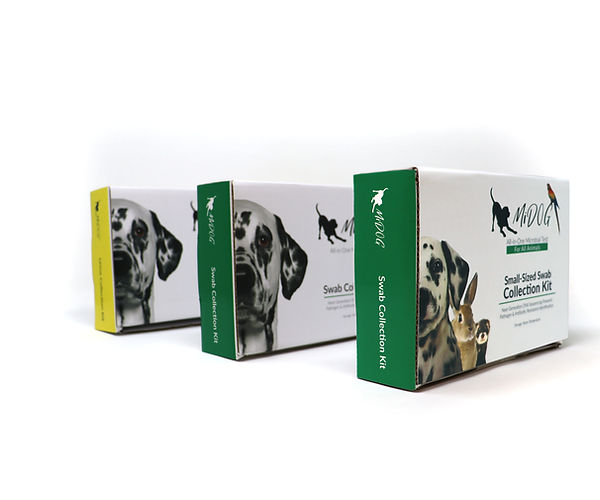
Find out if your vet uses MiDOG before you book your next appointment!
References:
1. Taboada, J. (2018). Fungal Infections in Cats – Cat Owners – MSD Veterinary Manual. Retrieved from https://www.merckvetmanual.com/cat-owners/disorders-affecting-multiple-body-systems-of-cats/fungal-infections-in-cats
2. Hartmann, K., Lloret, A., Pennisi, M. G., Ferrer, L., Addie, D., Belák, S., Boucraut-Baralon, C., Egberink, H., Frymus, T., Gruffydd-Jones, T., Hosie, M. J., Lutz, H., Marsilio, F., Möstl, K., Radford, A. D., Thiry, E., Truyen, U., & Horzinek, M. C. (2013). Aspergillosis in cats: ABCD guidelines on prevention and management. Journal of feline medicine and surgery, 15(7), 605–610. https://doi.org/10.1177/1098612X13489223
3. Gremião, I. D., Miranda, L. H., Reis, E. G., Rodrigues, A. M., & Pereira, S. A. (2017). Zoonotic Epidemic of Sporotrichosis: Cat to Human Transmission. PLoS pathogens, 13(1), e1006077. https://doi.org/10.1371/journal.ppat.1006077
4. Talbot, J. J., Kidd, S. E., Martin, P., Beatty, J. A., & Barrs, V. R. (2015). Azole resistance in canine and feline isolates of Aspergillus fumigatus. Comparative immunology, microbiology and infectious diseases, 42, 37–41. https://doi.org/10.1016/j.cimid.2015.08.002
5. Kay, A., Boland, L., Kidd, S. E., Beatty, J. A., Talbot, J. J., & Barrs, V. R. (2021). Complete clinical response to combined antifungal therapy in two cats with invasive fungal rhinosinusitis caused by cryptic Aspergillus species in section Fumigati. Medical mycology case reports, 34, 13–17. https://doi.org/10.1016/j.mmcr.2021.08.005
6. Meason-Smith, C., Diesel, A., Patterson, A. P., Older, C. E., Johnson, T. J., Mansell, J. M., Suchodolski, J. S., & Rodrigues Hoffmann, A. (2017). Characterization of the cutaneous mycobiota in healthy and allergic cats using next generation sequencing. Veterinary dermatology, 28(1), 71–e17. https://doi.org/10.1111/vde.12373
Categories: Cats, Pet Health, Safety and Wellness, Pet Parents, Skin Health
